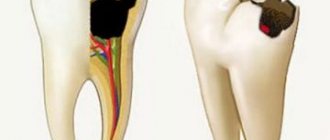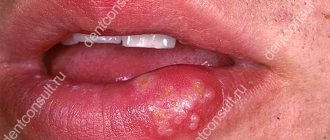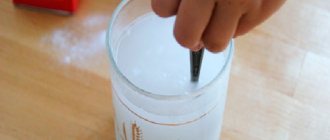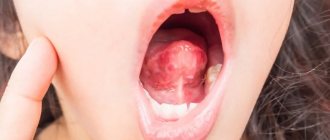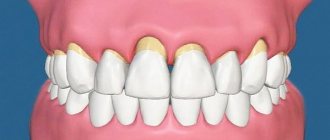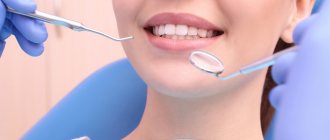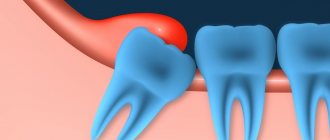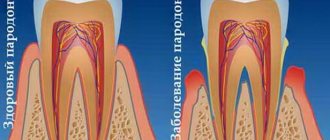A furuncle is a purulent inflammation of the hair follicle (follicle) involving the sebaceous gland and surrounding tissues in the inflammatory process. If inflammation affects several follicles at once, a carbuncle
– extensive and rapidly developing inflammation, a disease more dangerous than a boil.
If several boils occur simultaneously (in different parts of the body), they speak of furunculosis
.
The popular name for a boil is also widely known - boil .
Description of the disease
Boils can occur in both young children and adolescents. Today they are the most common purulent skin lesion. Inflammation can affect any area where there are hair follicles. Most often, boils appear on the child’s head and neck, less often on the body (in the groin, on the back or stomach, under the armpit), on the legs and arms. The main feature of the course of this pathology in children is the high risk of inflammation spreading to neighboring tissues and structures, as well as its spread through the bloodstream, leading to the development of dangerous complications.
Causes of boils in children
Most often, inflammation develops due to tissue damage by Staphylococcus aureus, less often the causative agent is other groups of staphylococci or streptococci. All of them are on the skin almost constantly, but in a normal state of immunity they cannot cause disease. The pathological process starts when exposed to certain unfavorable factors:
- wounds, scratches on the skin;
- skin diseases (eczema, atopic dermatitis);
- decreased immunity due to acute respiratory viral infections, operations, injuries, exacerbation of chronic diseases);
- congenital immunodeficiency conditions;
- diabetes mellitus and metabolic disorders (often cause the constant appearance of boils in a child);
- chronic infections: tuberculosis, pyelonephritis, sinusitis, etc.
Pathogenesis and stages of development
During the development process, the boil goes through three successive stages:
- initial (infiltration): the inflammatory process begins at the mouth of the follicle and gradually spreads;
- necrotic (maturation): inflammation engulfs the entire cavity of the follicle, causing necrosis and purulent melting of tissue; the process lasts from several days to 2 weeks and ends with a rupture of the skin over the center of the boil;
- healing stage: after the pus has drained and the cavity of the lesion has been cleaned, it gradually scars with the formation of a scar.
Types of ulcers and their features
If you have a boil in the nasolabial triangle, then it may not be a boil, but another disease that differs from furunculosis in the mechanism of development, symptoms, appearance and treatment methods:
- Aphtha is a manifestation of aphthous stomatitis. The disease differs from others in that white ulcers are localized not only on the lips, but also on the mucous surface of the mouth. In severe cases, the entire oral cavity may be affected.
- Herpes - blisters with transparent contents inside. It can appear on both the lower lip and the upper lip. Based on the initial symptoms, a cold on the lips can be confused with the formation of a boil. However, soon the lips begin to tingle and become covered with one or more blisters, which will soon be covered by a crust. Herpetic rashes are caused by a viral infection and can spread to healthy areas of the body.
- Lipoma is not exactly an abscess, but a benign formation on the lip, which is a stationary, dense subcutaneous ball. Inside it is a capsule with fatty contents, as well as dead epithelial cells. This neoplasm does not threaten your health if you do not try to get rid of it yourself. Lipoma can only be removed surgically.
Symptoms of a boil in a child
The main symptoms of a boil in a one-year-old child, preschool and school-age children are the same and depend on the stage of development of the disease.
At the initial stage, an area of redness appears on the skin, which gradually increases, but practically does not cause discomfort. As the pathology progresses, a purulent area appears in the center of the lesion, and the area of inflammation increases in size and becomes sharply painful. Then a necrotic rod is formed inside the cavity, which from the outside looks like a dark dot in the very center of the boil. After a few days, the abscess breaks through, its contents come out, after which the healing process begins. A small boil, especially if it is located on a child's hand, foot or finger, rarely causes general symptoms. With multiple inflammatory foci, as well as when localized in an area with a large number of blood and lymphatic vessels (face, neck, groin, armpits), the baby may have a fever, weakness, malaise and other signs of general intoxication.
What not to do with a boil on the cheek
When the boil is on the cheek, the patient often tries to get rid of the painful abscess, which looks unsightly, on his own.
But squeezing out an abscess at home is prohibited. Complications can occur because the contents of an incorrectly removed formation will get on the skin and spread across the cheek. New ulcers will appear.
Often people, especially women, mask the appearance of chiria with foundation and a thick layer of powder. But cosmetics clog pores, provoke further inflammatory processes, and prevent wound healing.
The development of the disease occurs in different ways. Sometimes the patient is thirsty or has a high temperature, and the lymph nodes are enlarged. If the patient notices a deterioration in the condition, a boil that appears, regardless of location, should be shown to a doctor who will prescribe adequate treatment and prevent complications.
Diagnosis of boils in children
Diagnosis and treatment of boils in children is carried out by a dermatologist, often requiring the help of a surgeon and/or otolaryngologist. Making a diagnosis is not difficult, since the formation is clearly visible during a routine examination. If boils appear in a child too often and/or in large numbers, a more detailed examination is required to clarify the cause of this condition. Depending on the situation, the following is prescribed:
- microscopy and bacterial culture of the abscess contents;
- general and biochemical blood test;
- glucose tolerance test for suspected diabetes mellitus;
- study of the state of immunity;
- Ultrasound of internal organs, examination of the nasal cavity and sinuses, chest x-ray and other studies aimed at searching for chronic foci of inflammation.
Pediatric doctors of other specialties often join the examination: endocrinologists, pulmonologists, gastroenterologists and immunologists.
In addition, if you suspect the development of a boil, it is imperative to involve a pediatric surgeon in the diagnosis. His intervention will help to promptly notice the formation of an abscess and take the necessary measures (opening the abscess, washing the cavity, bandaging).
Features of child treatment
Parents, having noticed a boil on their child’s cheek, do not always know what to do. It is not recommended to treat your baby with folk remedies. He needs the help of a doctor who will take into account not only the external signs of inflammation, but will also prescribe a blood test, prescribe medications, and, if necessary, refer the child to a surgeon.
If the abscess is very painful, you can give your child paracetamol or ibuprofen. Make sure that the baby does not pick, scratch or touch the sore spot.
Treatment of boils in children
If the child’s boil is small in size and is not located on the face, neck or knee, treatment at home is allowed. In case of extensive lesions or multiple purulent foci, hospitalization is required.
With a relatively mild course of the disease, conservative treatment is sufficient, which depends on the stage of development of the disease:
- at the initial stage, alcohol solutions and dry heat are used to accelerate ripening;
- at the necrotic stage, antibacterial agents, proteolytic drugs and regular wound washing are necessary;
- at the healing stage, agents are used that accelerate regeneration in combination with antibacterial treatment.
In more severe cases, local treatment is supplemented with systemic drugs: antibiotics, anti-inflammatory drugs, immunostimulants, etc. If the infection spreads to adjacent tissues with the development of abscesses or phlegmons, surgical assistance is required: opening and draining the abscess.
Help with boils
Often the abscesses jump up, ripen and burst, and the wounds heal without leaving a trace. The main thing is not to aggravate the course of the disease and not to interfere with the formation of an abscess on the cheek. It is permissible to use antiseptic ointments that penetrate into the abscess and fight inflammation. They dry out swollen skin, reduce pain, promote rapid maturation of the abscess and self-cleaning of the wound.
Seek medical help if:
- The abscess has no head.
- Education is very painful.
- The abscess occupies a large area of the cheek.
- Three days have passed, and the patient’s condition is worsening.
- The patient develops furunculosis (many ulcers), fever, and headache.
- From the boil, red stripes “diverge” along the cheek.
If you have an abscess on your cheek, it is better to immediately consult a dermatologist to avoid complications, scars and cicatrices.
Treatment with drugs
Treatment of a boil on the cheek is most often limited to topical preparations that are applied to the affected area. Antiseptic ointments are usually prescribed. If a person has furunculosis, the temperature rises, and the general condition worsens, the doctor prescribes antimicrobial medications:
- Lincomycin;
- Cephalexin;
- Amoxiclav.
Before prescribing a specific drug, the doctor refers the patient to a test that identifies the causative agent of purulent inflammation of the skin. Without a microbiological analysis, there is a high risk of prescribing an ineffective medicine, because Staphylococcus aureus is surprisingly resistant to many antibacterial drugs.
An antibiotic will only be effective if you take the entire course prescribed by your doctor. Typically, medications are taken for 5 to 7 days.
It is impossible to arbitrarily stop treating a boil with antibiotics, even if the condition has significantly improved. The infection will return and the boil will develop again. Only it will be more difficult to defeat it with antibacterial agents, because the “surviving” pathogen will become resistant to the action of the drug.
Surgical intervention
Surgical intervention provides an effective result. He has his own testimony. A boil is removed surgically from the cheek if it threatens the patient’s health or if drug treatment is ineffective.
Such an operation is performed only in a hospital by a surgeon. The patient is given local anesthesia. The skin at the top of the boil is incised crosswise. Through this incision, the doctor removes the pus and necrotic core. The wound is thoroughly disinfected and a gauze bandage is applied to the cheek.
The patient can be observed for some time by a doctor who assesses the degree of wound healing.
Traditional methods
At home, boils on the cheek are treated with folk remedies. You can resort to them after consulting a doctor. He will advise you on how to cure a boil on your cheek and tell you which methods are safe.
Traditional treatment with compresses and herbal tinctures helps. Popular remedies are baked onions, cakes made from flour and honey, cosmetic clay, and compresses made from plantain leaves.
- An onion compress accelerates the maturation of a boil on the cheek. The onion head is baked in the oven until soft, cut in half and applied to the sore spot for 4 hours, preferably overnight. The main thing is to use only cooled onions. Perform the procedure until the boil matures and the contents come out.
- If a necrotic core remains in the wound, apply a compress of mashed or crushed fresh plantain leaves to the cheek.
- Cosmetic clay and special mud compresses are considered effective. To do this, the powder, which is purchased at a cosmetics store or pharmacy, is diluted with boiled water and brought to a paste-like consistency. Apply the paste in a thick layer on the abscess, wait about 4 hours and carefully wash off the resulting crust with warm water. The procedure is repeated.
- The affected area on the cheek is wiped with tinctures of calendula and chamomile. They dry and disinfect inflamed skin.
- Wholemeal rye flour mixed with honey also fights the inflammatory process. Knead a stiff dough and apply it to the abscess in the form of a flat cake. A layer of gauze is attached on top and the honey dough compress is left overnight.
When the boil opens, the main thing is not to re-infect the wound. A sterile gauze bandage on the cheek, which must be changed regularly, will help protect the wound and speed up healing.
Physiotherapy
The attending physician, who decides how to treat a funurcle on the patient’s cheek, sometimes refers the patient to laser physiotherapy. Laser therapy is a procedure that is successfully used to treat skin boils on the cheeks and gives positive results after 3-5 sessions. It has many advantages. For example, it helps to quickly restore tissue after a boil has burst and accelerates the wound healing process.
The laser is used at any stage of the disease. A special device is used to irradiate the affected area of the cheek with a red or infrared laser either directly or at a short distance.
This method is painless, allows you to do without medications that have a detrimental effect on the liver, and avoid surgical intervention.
Prognosis and prevention
Single boils that occur without complications completely disappear within 2-3 weeks.
With relatively frequent relapses (exacerbations once a year or more often), the likelihood of complications is much higher. In this case, regular monitoring, immunostimulating procedures, and treatment of underlying diseases are required. Prevention of the development of boils in children includes careful skin care, regular hardening and strengthening of the immune system, timely treatment of acute and chronic diseases.
A boil is not just a pimple. An abscess can cause severe complications, including sepsis and meningitis, which is why any such formation on the body of a child or teenager requires careful monitoring. The specialists of the SM-Doctor clinic will select the optimal method of treating and preventing this problem.
Causes of abscesses
A boil on the cheek appears for various reasons. Unfavorable weather conditions, for example, severe frost and failure to follow basic rules of facial care, lead to the epidermis cracking and flaking. Neglect of hygiene or, conversely, fanaticism regarding cosmetic procedures, peeling, and cleansing also damages the skin and washes away the protective layer from the surface of the epidermis.
The skin is left without protection. Pathogenic bacteria that fall on it penetrate into the deeper layers and provoke inflammatory processes, including furunculosis.
Other causes of boils on the face:
- Previous illnesses that weaken the immune system (for example, colds, flu).
- Chronic or autoimmune diseases, such as diabetes.
- Improper metabolism.
- Avitaminosis.
- Abuse of sweet, flour, fatty foods.
- Alcohol, smoking.
- The habit of touching your face with your hands, combing, scratching, rubbing.
As a result of such actions, boils also appear on the cheeks, because the opportunity to wash your hands during the day is not provided so often.
